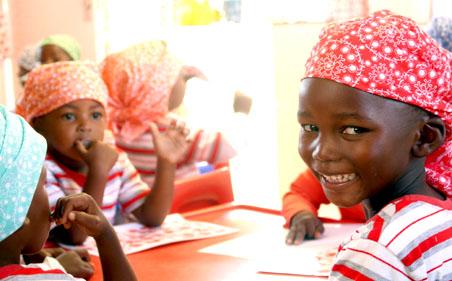 |
|
The smiles on the children at Beyang Bana Pele Creche in Mangaung were blindingly bright, after their new classrooms and playground were unveiled on Friday 15 April. The creche was renovated by a group of third-year medical students from the UFS.
Photo: Earl Coetzee
|
A group of third-year medical students from the University of the Free State was responsible for many smiling little faces when they unveiled a entirely renovated crèche to its little students on Friday, 15 April.
Reinhardt Erasmus, Fathima Vawda, Veneshree Govender, Antoi Roets, Riaan Calitz, Motlalepula Mabizela, Tertius Potgieter and Chanel van der Westhuizen were the students responsible for the massive renovation work that went into the Beyang Bana Pele Creché in Mangaung.
The students tackled the project as part of a community service project and ensured that the 30 children who attend the crèche can look forward to coming to a safe healthy environment every day.
According to Riaan Calitz, they started the project at the beginning of the year by doing a needs analysis and talking to the children’s parents and teachers. They also involved the aid of an architect and quantity surveyor to calculate the needs of the crèche.
Next, they had to search for sponsors for their work, and struck it lucky when the Windmill Casino agreed to donate R100 000 to their project. They also managed to raise a further R5 000 as well as approximately R50 000 in goods and services donated by various other companies.
This money was enough to improve the safety at the crèche, install safe gas equipment in the kitchen, improve the insulation to ensure a warm winter, install new playground equipment and host several health and safety workshops.
“It took a lot of late nights and early mornings,” Calitz said. “Some of us also had to return from our holiday early, but it was worth it.”
He says the gratitude from the school’s children and teachers, as well as community members, who would stop and thank them for their help while they were busy working, makes it all worthwhile.
The students plan to stay involved with the crèche and say the renovation plan was drafted in such a way that when they move along, another group can simply pick up from their work with ease.
Mrs Sarah Mothoana, the crèche matron, thanked the students as well as everyone who assisted them in “creating a wonderful, safe and healthy environment for the children.”